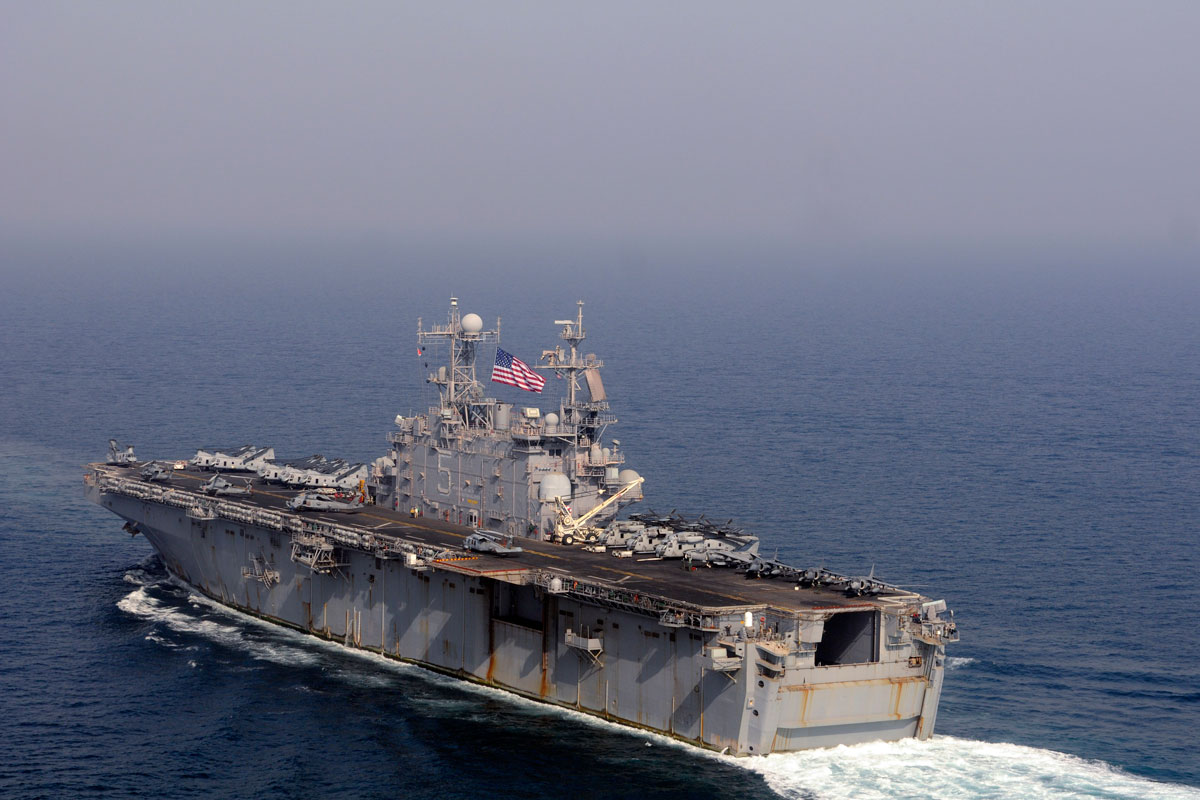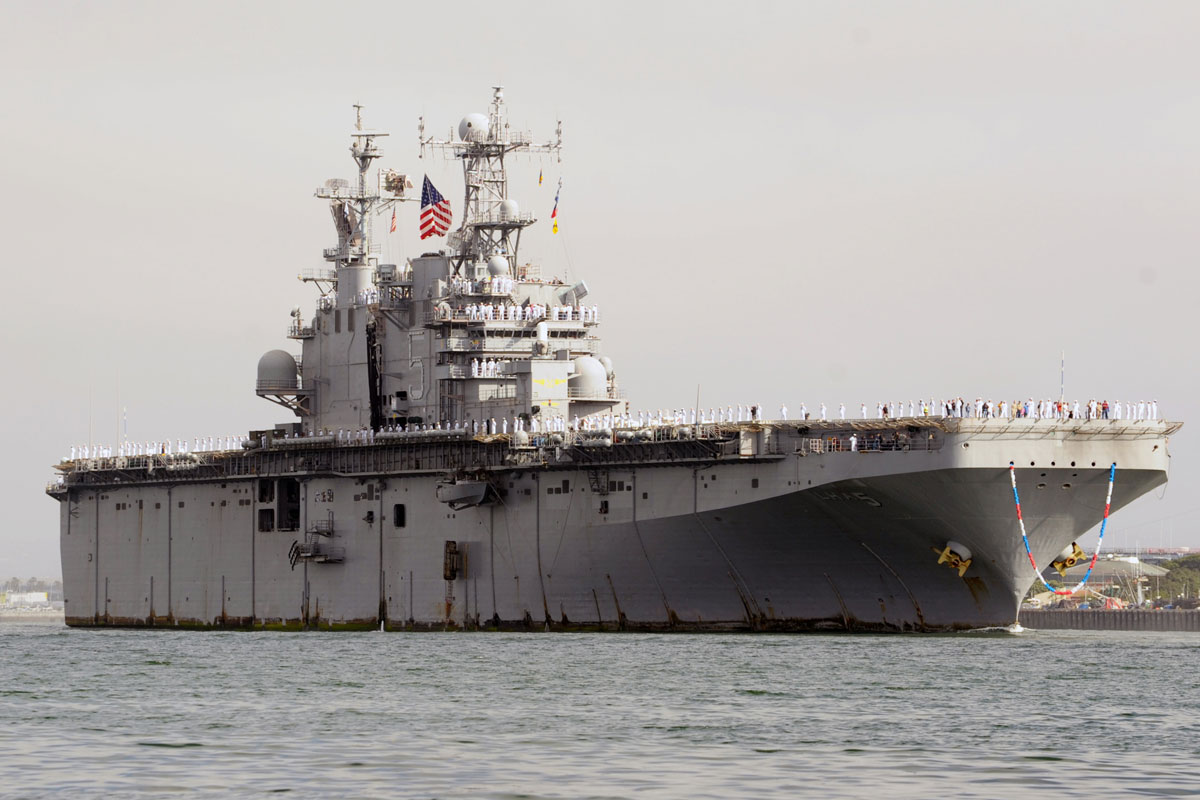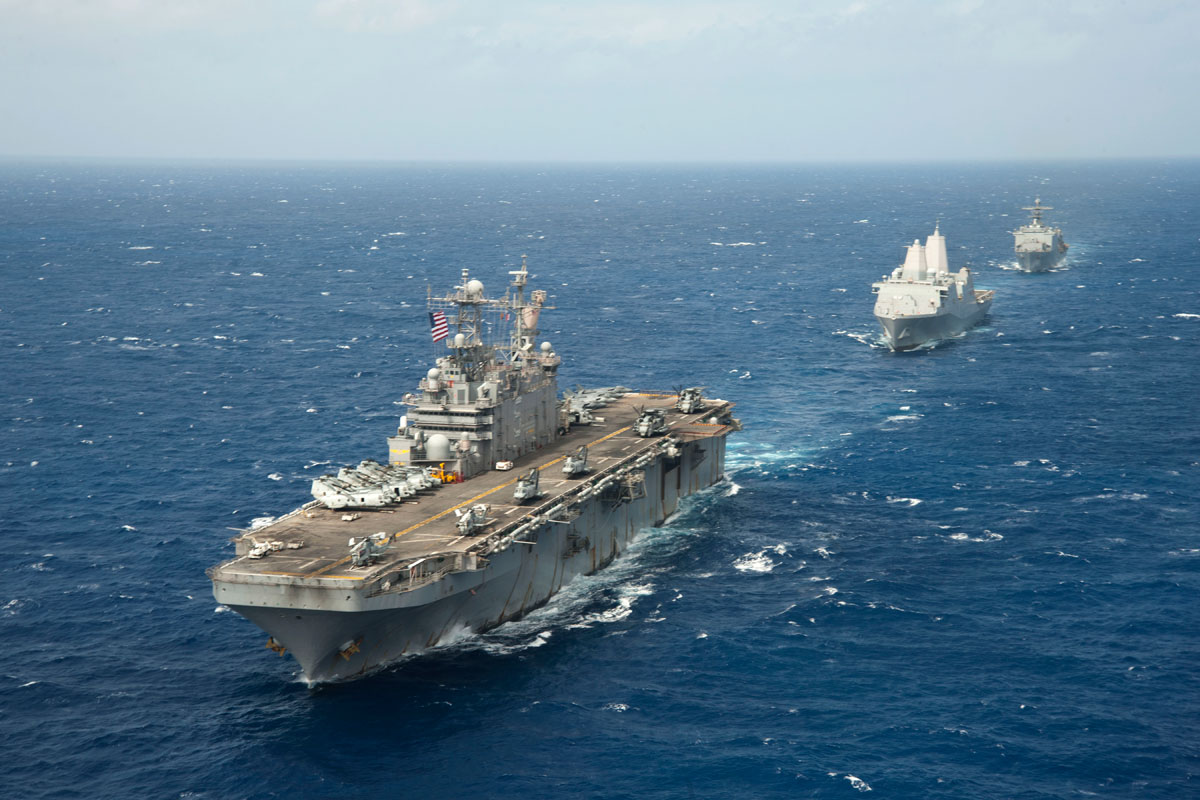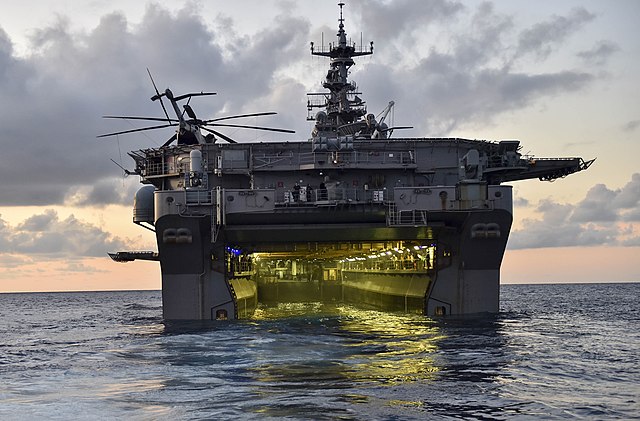The Versatile Role of Wasp Class Amphibious Assault Ships as Light Aircraft Carriers
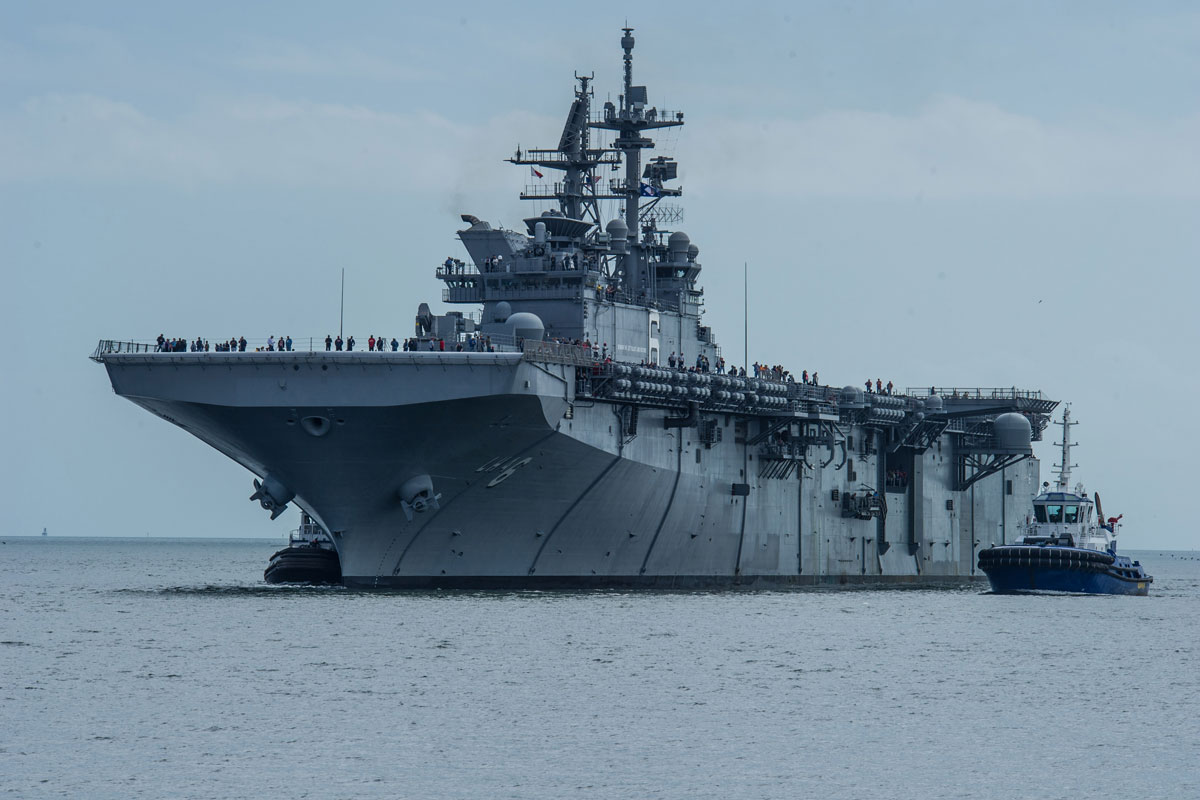
The Wasp-class ships represent a pinnacle of the US Navy’s amphibious assault capabilities, offering an unparalleled ability to conduct operations on hostile shores worldwide. These vessels were the first of their kind, purpose-built to accommodate both the AV-8B Harrier II aircraft and a fleet of LCAC hovercraft. When they were introduced, they held the distinction of being the largest amphibious assault vessels globally, with the new America-class ships being the only ones larger today.
Derived from the Tarawa-class design, the Wasp-class ships share a similar hull and engineering layout. However, notable differences include a bridge situated two decks lower than LHAs (Landing Helicopter Amphibious) and the positioning of the command, control, and communication centers within the hull, making them less vulnerable to enemy attacks. To aid landing and recovery operations, the ships can ballast up to 15,000 tons of seawater for stability adjustments.
These formidable vessels can embark a marine expeditionary unit comprising up to 2,000 personnel, delivering them to the beach using their own landing craft or via helicopters in a maneuver known as vertical envelopment. Each Wasp-class ship boasts an 81-meter by 15.2-meter well deck capable of accommodating up to three LCACs or twelve LCMs. Furthermore, they can transport a total of 61 AAVs (Amphibious Assault Vehicles), with 40 stored in the well deck and 21 in the upper vehicle storage area.
The flight deck features nine landing spots for helicopters and can operate up to 42 CH-46 Sea Knights. The class can also deploy AH-1 SeaCobra attack helicopters and other transport aircraft such as the CH-53E Super Stallion, UH-1N Twin Huey, or the versatile SH-60B Seahawk. In a combat role, the Wasp-class can support six to eight AV-8B Harrier IIs but has the capacity for up to 20. The ships are equipped with two aircraft elevators—one on the port side amidships and another on the starboard side aft of the island, which must be folded inboard when passing through the Panama Canal.
The composition of the air group can vary based on the mission. For sea control operations, the Wasp-class can function as aircraft carriers, supporting 20 AV-8Bs and six ASW helicopters. In amphibious assault scenarios, a typical group may include six AV-8Bs, four AH-1W Super Cobra attack helicopters, 12 CH-46 Sea Knights, nine CH-53 Sea Stallions or Super Stallions, and four UH-1N Twin Hueys. Alternatively, the ships can operate 42 CH-46s.
Designed to carry a diverse range of combat vehicles, the Wasp-class ships can transport five M1 Abrams main battle tanks, 25 AAV7A1 armored personnel carriers, eight M198 155 mm towed guns, 68 trucks, and several support vehicles. They excel at transporting and deploying a wide array of equipment and vehicles, aided by monorail trains that can move cargo from storage areas to the well deck at speeds of up to 183 meters per minute. Additionally, each ship features a 600-bed hospital with six operating theatres, reducing the dependency on onshore medical facilities for an amphibious task force.
Since the mid-1990s, the Wasp class has been replacing the older LHAs. One notable example is the USS Bataan, which employed pre-outfitting and modular construction techniques to expedite its assembly. This innovative approach allowed the ship to be three-quarters complete upon launch. Importantly, the USS Bataan was the first amphibious assault ship designed from the outset to accommodate female personnel, providing accommodations for up to 450 female officers, enlisted personnel, and troops.
The final three ships in the class have come at an average cost of $750 million each. The US Navy originally planned for a 12-strong Amphibious Ready Group (ARG) to be deployed by 2010, as the first Tarawa-class vessel reached 35 years of service. The last ship of the Wasp class, the USS Makin Island, served as a basis for the new America-class amphibious assault ships, with the first ship of this class commissioned in 2014. Ultimately, these new vessels will replace the aging Tarawa-class ships.
In a significant incident in 2020, the USS Bonhomme Richard caught fire during shipyard repairs. It took four days to extinguish the fire, but the ship sustained severe damage. Repair estimates ranged from $2.5 billion to $3.2 billion over a seven-year period, making it financially unfeasible to restore the vessel. Consequently, the US Navy decided to decommission and scrap the USS Bonhomme Richard.
Hits: 126
